 In the past week, I have had two interesting experiences with the media, both of which have helped remind me in humorous ways of the enormous challenge we Americans face in our quest for self-knowledge and self-liberation. Two journalists interviewed me about intuition (the topic of last week’s blog). The first was a young reporter, Max, for a local television news program, and the second was an editor, Gabrielle, for Bustle.com, an online women’s magazine. When their stories came out, neither turned out to be anything like what I had expected. One of the most delightful qualities we human beings possess is that we are full of surprises. For me, both of these media experiences just scream out: SURPRISE! The TV interview appeared in a featured called “To Trust Your Gut Instinct or Not? Experts Weigh in.” Max had approached me initially with a fascinating premise: Victims of violent crimes often report afterwards that they had had a gut feeling or sense of foreboding prior to their attack but chose to disregard it. When he asked me about subliminal perception at the start of the interview, I realized that Max was coming in with some preconceived ideas about the nature of intuition. For nearly 20 minutes, I explained why intuition extends far beyond subliminal perception or other forms of unconscious cognition. All of that ended up on the cutting room floor. As you can see, Max starts the report by equating intuition with subliminal perception and then uses a snippet from the interview to support his claim. That puts me in the unique and very amusing position of having to refute myself. So, my message to my friends who are interested in the report: Feel free to watch it, but please ignore most of what I have to say! The Bustle article was entitled, “I Tried to Become a Psychic & It was More Revealing than Therapy.” My first reaction to that title was, “Huh?” When I had asked her about the premise, Gabrielle responded, “The article's focus is examining both more New Age thinking about intuition and scientific research about the subject, as well as examining some of the most common techniques presented for helping people increase their ability to connect with their intuition.” That sounded interesting to me. I had no idea she was setting out to become a “psychic.” The start of the article reads like a diary entry written by a very young person seeking to indulge a guilty pleasure. Fortunately, the article goes much deeper—eventually. By the end, Gabrielle has arrived at an important realization: Most of us Americans are not attuned to our intuition because we have become “estranged” from our own bodies. She admits that she has no time to even think about her body: “On most days, as I struggle to work my day job, fill my evenings with personal work, and spend time with my husband and friends, I feel psychologically stretched thin beyond recognition and so disconnected from my physical self, I practically have an out-of-body experience just waiting on line at Starbucks.” When I read these words, I felt Gabrielle’s sense of disconnection from her own body so strongly that I wanted to cry. It showed me that the first step in self-liberation for most of us Americans is to re-discover our bodies. There is so much to explore. These beautiful bodies of ours hold the key to everything: passion and inspiration, bliss and ecstasy, transcendence and realization. It begins, quite simply, with our five senses. Find the sights and sounds that are most beautiful, the tastes that are most delicious, the odors that are most evocative, and the touches that are most delightful. Then immerse yourself in those sensations until nothing else remains—not even the one who is experiencing them. All that is left is the experience itself. For a moment, you become fully alive--totally present in the present. Spiritually speaking, that has always been the name of the game, which is why my favorite mantra is: Here and Now, Baby! Everything else follows from that: You will discover the extraordinary wisdom of your intuition, the expansiveness of your imagination, and the simple fact that there is no limit to what you can create in this world. In spite of all the surprises that Max and Gabrielle had in store for me, it really comes as no surprise for me that we Americans lack a proper grasp of intuition. We have yet to come in contact with the great beauty and splendor abiding within our own bodies.
2 Comments
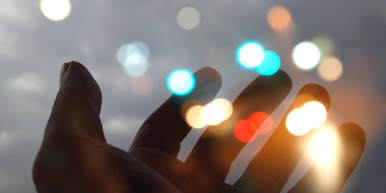 In their efforts to be taken seriously as scientists, my fellow psychologists impose strange restrictions on themselves and their field. For much of the last century, they were only allowed to study human behavior and not mental life, which was termed an “explanatory fiction.” When the cognitive revolution happened, suddenly psychologists gave themselves permission to study certain aspects of mental life, such as memory, reasoning, and perception. Yet other aspects are still off-limits to a certain extent because they make my colleagues uncomfortable. Intuition is one of those. As a creativity researcher, I am fascinated by intuition, which is inherently mysterious. Suddenly, we know more than we think we do, and that knowledge comes in unusual ways. Intuitive knowledge is not generated through our five senses, our memories of the past, or our ability to think and reason. There seems to be another source at play. Artists from every part of the world and every era in human history have described the experience of being guided by an unknown yet undeniable force. In his classic song, “Taxi,” Harry Chapin wrote, “There’s a wild man wizard hiding in me, illuminating my mind.” That is what intuition feels like. In Deep Creativity: Inside the Creative Mystery, I describe my personal journey into intuition and other aspects of the creative experience that most psychologists tend to ignore, such as passion, inspiration, and imagination. Like most experiences, intuition can best be understood from the inside. When I was writing Deep Creativity, I had moments when my fingers felt like they were moving themselves on the keyboard, and all I could do was sit back and marvel at the words that were appearing on the screen. This did not happen every time I sat down to write, but undoubtedly my most satisfying and productive writing days were that way. So, my first reaction to someone who denies the existence of intuition or tries to dismiss it as unconscious cognition is to laugh. I find it funny because I have been there and I know what it feels like. Either you have experienced intuition or you haven’t. This is not a matter of faith. The idea of unconscious cognition is that individuals can process information without having any awareness of having done so. Once the processing is complete, the answer pops into their awareness and suddenly they know something they didn’t know before, but they have no idea how that knowledge came to be. This explanation of intuition never felt right to me. So, in 1996, I began a research study that would challenge the notion of unconscious cognition. My Intuition in Pregnancy study has been cited in the mainstream media for two decades (see my Media Kit page for links to books and articles featuring this research) while being dismissed by my academic colleagues. In this study, I asked pregnant women to predict the sex of their unborn child. I chose this particular form of intuition because of how hard it would be to classify it as unconscious cognition. There is no known perceptual or reasoning process that could lead a mother to know the sex of her child, assuming she has not had a sonogram or other medical procedure. The folk mythology around pregnancy, which claims, for example, that a male fetus is positioned differently in the uterus relative to a female, appears to have no basis in fact. When I was doing this research, I focused on women whose predictions were based on an intuition, such as a dream or a “gut feeling.” I found that 70 percent of the women who had an intuition about the sex of their child were correct, as long as they did not have a strong preference for a girl or a boy. Such preferences tend to override intuition. So, how does a mother know the sex of her child? That is an intriguing question. All I can offer is a hypothesis, which I call “knowing by being.” For nine months, a mother shares her body with her child. In a very real sense, the child is a part of her. She knows that child as intimately as she does her own body. A mother knows the child developing inside her because she is one with that child. How we choose to explain intuition matters. Those who claim that intuition is nothing but unconscious cognition are underestimating and even misrepresenting this capacity. Psychologists do accept the idea that we have “inner speech,” but they tend to see it as a monologue with only one speaker. I see it as a dynamic conversation in which many voices are engaged. We may sometimes hear the voice of common sense, of fear and caution, of love and delight, and of those who have shaped us throughout our lives, such as our parents and teachers. I hear my grandparents’ wisdom expressing itself in me on a nearly daily basis. The Bible describes a “still small voice” that spoke to the prophets. I know this voice well; it speaks to me often. And it is unlike any other. The still small voice offers guidance and comfort. It points me in the directions that bring me the greatest fulfillment—and challenge. It is not always easy to listen to this voice; there are times when I would prefer to ignore it, for the sake of convenience and simplicity. It can be so subtle that I might be tempted to disregard it altogether. Yet, so very often, it steers me away from obstacles and danger. I have taught myself to discern this voice from all others, and to make the lines of communication as clear as possible. As with any other form of communication, the idea is to increase the signal-to-noise ratio. I have written extensively about that in all of my books because I think the ability to tune into our intuition is one of the most powerful resources at our disposal. Victims of violent crime often report afterwards that they had a feeling they were going into an unsafe or dangerous situation but they chose to ignore it. I see these types of situations in terms of a cost-benefit analysis. If that feeling is correct, the benefit is that you avoid tremendous harm and trauma. If the feeling is wrong, then the cost might be embarrassment or inconvenience. I would say to you that if you ever find yourself in a similar situation, and the benefit of tuning into a feeling of this type outweighs the cost—which is almost always the case—then the feeling deserves your attention The more deeply you explore intuition, the more it guides you. At first, it may manifest as a vague feeling. Then you might start to use it to get answers to simple “yes” or “no” questions. Eventually, you discover what a rich source of insight and wisdom it can be. Intuition is, in my mind, one of the most undervalued and misunderstood aspects of human experience. 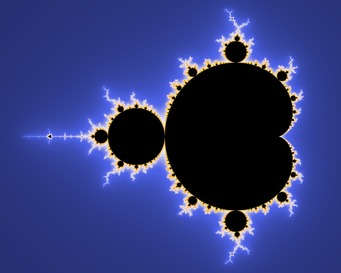
This image you see here of the Mandelbrot set may be the most important spiritual icon of the Twenty-First Century. Unlike other such icons, it represents something that is universal and beyond any ideology or belief system.
When you zoom in on it (see the video below), what you see is a pattern that repeats itself at smaller and smaller scales. The Mandelbrot set, like other fractals, has the property of self-similarity. I prefer to think of it as self-embedded, because the basic motif that appears at every level is not just similar: it’s identical. So, what does this all have to do with spirituality? The Book of Genesis begins with this bold statement: “In the beginning, God created heaven and earth.” What makes this statement so bold is that it raises so many questions. Firstly, how could there be anything prior to the existence of a universe? The Creator is essentially a formless consciousness. Before there is anything to be, the Creator says, “I am.” Nothing can stagger the imagination like the idea of a pure consciousness—a pure essence or being, if you will—in the absence of any thoughts or things. Here is a second and perhaps even more mind-boggling question: How does this formless consciousness give rise to a universe? When I began my Bible studies at age seven, I remember thinking about this question. I tried to envision a giant toolbox (including hammer, nails, saw, etc) with which a Creator could build a universe. But I knew this made no sense. How could it? The Creator has to create something out of nothing. That is quite a tough trick! I was stymied by this until December 10, 2014. On that eventful day, I came across the slow zoom of the Mandelbrot set shown below. While watching it, I had an epiphany. Suddenly, I understood how the pure formless consciousness of the Creator gives rise to a universe of form: By embedding itself in every single thought! All of the thoughts that have ever existed comprise a universal mind. My realization at that moment is that the universal mind is a fractal. Benoit Mandelbrot, the man for whom the set is named, wrote extensively about the idea of a fractal universe. In my moment of illumination, I realized that the universe of things “out there” and the universe of thoughts “in here” are one and the same. Quantum physicists like Erwin Schrodinger recognized this fact over a century ago. Schrodinger wrote: “Subject and object are only one. The barrier between them cannot be said to have broken down as a result of recent experience in the physical sciences, for this barrier does not exist.” So, here is the significance of all this: Consciousness embeds itself at every level of the universal mind. Clearly, we have consciousness in our bodies. If we zoom in on our bodies, we will find the same consciousness abiding within the organs, tissue, cells, organelles, molecules, atoms, and subatomic particles that make up those bodies. And if we zoom out to the far reaches of the universe, we will discover the same thing. The universal mind is self-embedded. That is why the soundtrack of the video below repeats the statement: “The source is entangled in the universe, layer upon embedded layer.” The video also features another strange statement: “There are no boondocks.” What is that all about? To find out, you will need to read Deep Creativity: Inside the Creative Mystery! 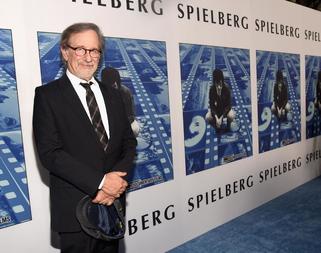 Are you a free spirit? You can take this short quiz to find out. And what you will discover is that the definition of a free spirit is based entirely on one thing: the experience of being fully alive (EBFA)! You are already familiar with this experience. In an EBFA, you are so immersed in the moment that time stands still and you literally lose yourself. All distractions disappear, and the only thing that matters is the sensations you feel: passion and inspiration, love and joy, bliss and ecstasy. For a free spirit, nothing is more precious than the EBFA. Most of the artists I have met and interviewed qualify as free spirits because they have made such experiences their highest priority. They have devoted their lives to their art, even when it has meant financial struggle and a lack of recognition. Most would agree that an artist’s life is not easy. Like everyone else, artists have bills to pay, and they have heard the modern-day gospel of “security and stability.” I can’t imagine there are very many artists who have not been encouraged at some point—by a friend, parent, spouse, or lover—to settle down, find a more practical career, and start thinking about their future. Given these challenges, why would anyone pursue the path of an artist? Perhaps some hold onto the dream of future success. But many more know that the moment they delve into their own creative process, they have already achieved success. When you are devoted to the EBFA, you can never fail! The magic that happens in the creative moment is infinitely rewarding. That is not an exaggeration. I know that it has been for me. When I write, I don’t think about what will become of my words. Will anyone read them? Will anyone care? It makes no difference. There is a moment when I “lose my fingers.” Those fingers almost seem to have a mind of their own. They type words on the keyboard of their own accord, and I am a fascinated reader waiting with baited breath to find out what will appear next on the computer screen. That’s magic! The more I immerse myself in that moment, the richer and more satisfying it becomes. There is so much unfolding right here, right now, in this precious instant. I connect with something infinite and eternal. Suddenly, all things become possible. An expansive universe opens up to my imagination. And nothing—I mean, absolutely nothing—is missing. My personal mantra, as an artist, is: “Here and Now, Baby!” These words draw my attention to the perfection of this moment: Everything that ever was or ever will be is here right now. I just came across a story about film director Steven Spielberg. Early in his career, he had a studio boss who assured him, “I will support you as strongly in failure as I will in success.” These words gave Spielberg a sense of freedom, allowing him to be bold and imaginative without fear of failure. What a wonderful luxury it would be to receive such words of support from a boss. But I have an even more liberating message for my many artist friends: You cannot fail. If you know the intense joy that comes from creating, you are already a success. No matter what else happens in your life, you can say, beyond a shadow of a doubt: I MADE IT! This is one of my favorite weeks of the year because we celebrate the lives of two most extraordinary leaders. October 2 is Gandhi Jayanti, the birthday of Mahatma (“great soul”) Gandhi. And October 4 is the Feast of Saint Francis of Assisi. The two men have much in common. Both had a powerful experience that launched them on their unique life paths. For Gandhi, being thrown off a train in South Africa inspired him to devote himself to resisting injustice and inequality. In the case of Saint Francis, a crucifix spoke to him, saying, “Go, Francis, and repair my house, which is in ruins.” Each man embodied a fundamental principle of leadership: GREAT LEADERS ARE ALWAYS GREAT SERVANTS. This is why I consider both to be the ultimate role models. Neither ever asked anyone to do anything that they had not already done themselves. Both gave their lives in service of the poor and downtrodden. 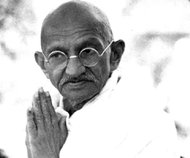 Perhaps most importantly, they were guided by the same powerful idea. In his magnificent “Canticle of the Sun” (shown below), Saint Francis sang of the sanctity of all creation. Gandhi named his nonviolence movement satyagraha, a Sanskrit term meaning “the force of truth.” And what is that truth to which Gandhi dedicated his life? It is that one unitary consciousness permeates everything, without exception. Gandhi had no enemies—only adversaries. He had the deep conviction that we are all one. This truth holds even for those who mistreat, exploit, and abuse others. Such individuals have yet to learn the true nature of the universe. Satyagraha was not about defeating human beings but rather about overcoming ignorance. 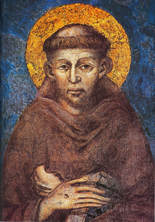 Saint Francis took to heart the idea that “the Kingdom of Heaven is near.” To enter into that Kingdom, he maintained, requires poverty, simplicity, and purity. Saint Francis lived in accordance with that ideal and never strayed from it. Both Gandhi and Saint Francis walked their talk as much as any human being ever could. How inspiring is that? I celebrate both men every day of the year, but even more so this first week of October. We are blessed that such exceptional role models ever walked this Earth! Most High, all powerful, good Lord, Yours are the praises, the glory, the honor, and all blessing. To You alone, Most High, do they belong, and no man is worthy to mention Your name. Be praised, my Lord, through all your creatures, especially through my lord Brother Sun, who brings the day; and you give light through him. And he is beautiful and radiant in all his splendor! Of you, Most High, he bears the likeness. Praised be You, my Lord, through Sister Moon and the stars, in heaven you formed them clear and precious and beautiful. Praised be You, my Lord, through Brother Wind, and through the air, cloudy and serene, and every kind of weather through which You give sustenance to Your creatures. Praised be You, my Lord, through Sister Water, which is very useful and humble and precious and chaste. Praised be You, my Lord, through Brother Fire, through whom you light the night and he is beautiful and playful and robust and strong. Praised be You, my Lord, through Sister Mother Earth, who sustains us and governs us and who produces varied fruits with colored flowers and herbs. Praised be You, my Lord, through those who give pardon for Your love, and bear infirmity and tribulation. Blessed are those who endure in peace for by You, Most High, they shall be crowned. Praised be You, my Lord, through our Sister Bodily Death, from whom no living man can escape. Woe to those who die in mortal sin. Blessed are those whom death will find in Your most holy will, for the second death shall do them no harm. Praise and bless my Lord, and give Him thanks and serve Him with great humility. |
I want to hear from you! Please share your questions and comments. And sign up for my newsletter, where I will pass along the insights, ideas, and inspiration that come my way.
Contact me:Archives
November 2023
|

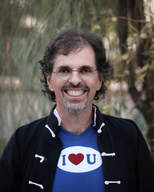
 RSS Feed
RSS Feed
